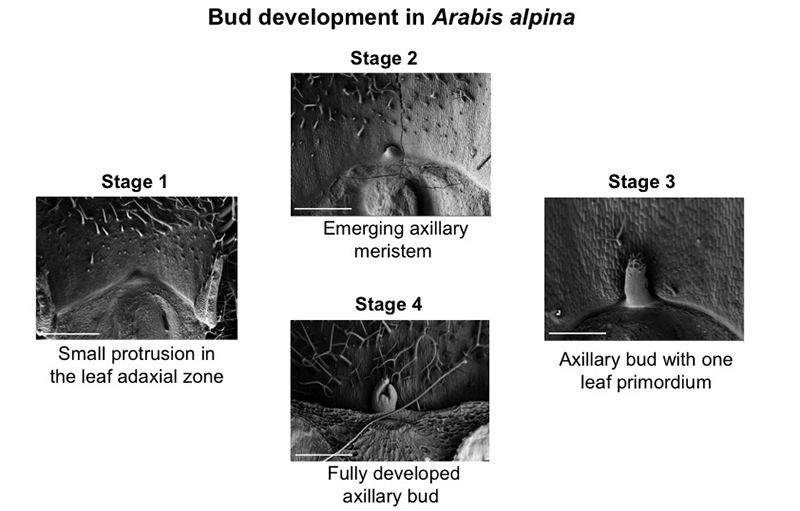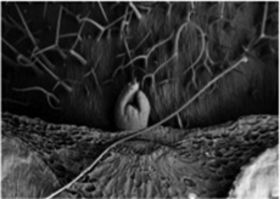Bud bank – a reservoir for the future
Have you ever wondered why some plants have to be planted every year and other plants produce flowers and fruits year after year by themselves? Plants that have to be planted every growing season are called annual plants (e.g. peas). These plants germinate from seeds, grow, flower, produce seeds and die in one growing season. Plants that grow for many years are called perennial plants (e.g. apple trees).
Perennial plants can grow continuously in their favorable growing season and in unfavorable condition they shed off their leaves produce dormant buds, which can with stand harsh conditions. In the next growing season, such buds can develop into shoots, allowing continuation of growth and the cycle continues. Buds play an important role in the prolonged life cycle of perennial plants. Therefore, it is important to understand how these buds are established.
Buds usually develop from a group of pluripotent cells localized in the axils of leaves, called axillary meristems (AMs). These AMs, initiate the formation of leaf primordia, establishing an axillary bud, which can enter a resting/dormant phase or directly grow out into side-shoot.
In some crop plants, side-shoots are undesired. For example in greenhouse tomato production, side-shoot are removed manually to get bigger fruits. On the other hand, in plants like rice and barley, an increase in number of side-shoots (tillers) promotes crop yield. To influence the number of side-shoots in crop plants requires detailed know-how about genes that control AM formation.
Our research focuses on the mechanisms that control AM initiation in model plants like tomato, Arabidopsis and Arabis alpina, with the aim to improve crop plant shoot architecture and yield.
The CEPLAS project intends to understand AM initiation in perennial life cycle of the model plant Arabis alpina. Our main questions are_
- When in perennial life cycle are buds produced that stay dormant?
- How similar or dissimilar are the patterns of gene expression in AMs formed at different positions of the plant body?
- Which genes regulate the pattern of AM formation during shoot development of Arabis alpina?
Know-how gained in this project would then be used to improve shoot architecture in crop plants.
Contribution by Udhaya Ponraj, Max Planck Institute for Plant Breeding Research, Cologne

